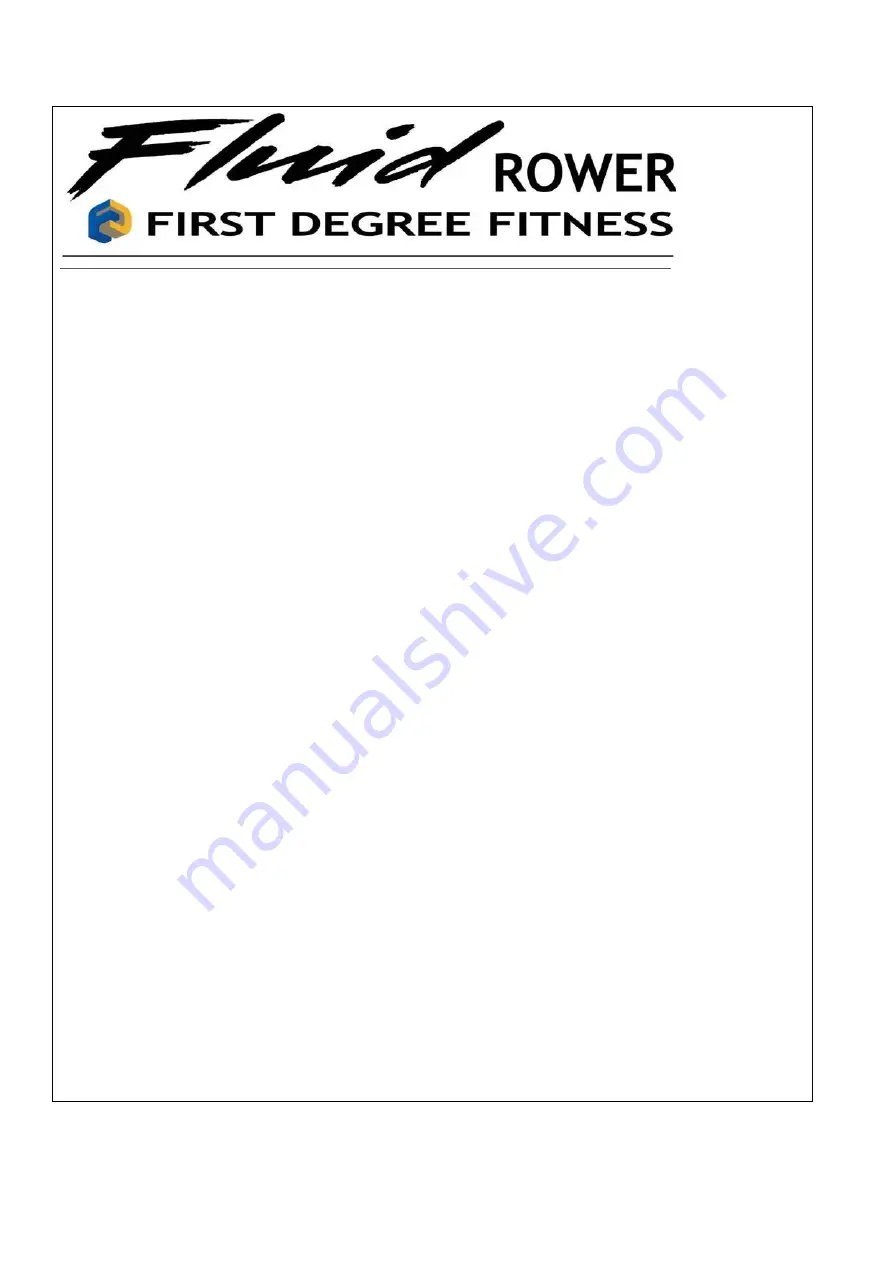
4
Now, because rowing is a “backwards” sport, instead of saying “let’s start at the very beginning”, we normally start at the end.
The coaching process begins at the finish of the stroke, finding out the right position for that. So as explained above, sit on the
seat of the rower with your feet in position on the footboard, and your legs straight. Sit with your head high and a nice straight
back, ensuring you are not leaning to one side, and your shoulders are level. Fluid Rower is specially designed to have a higher
seating position than its competitors, which we find gives better physical and psychological encouragement towards correct
upright posture.
And remember that if you are doing this right, your weight should be evenly distributed on the seat, both buttocks supporting
equal load. We are still not touching the handle. Now just practice swinging the body from the hips. Not a long way, only about
15 degrees forward of the vertical to 15 degrees back. OK, you don’t have an angle protractor handy, nor one locked in your
brain, but this is about the angle of a ladder leaning against a wall. Picture that in your mind. And a ladder is STRAIGHT, and so
should your back be, not curved, no chin slumping on your chest. Just think about it. Straight ladder leaning forwards, easy
swing through the vertical, straight ladder leaning back. Keep your head high at all times and just let your arms swing loose by
your sides to ease the movement. Rehearse this motion for a minute until it feels comfortable.
What we are doing here is starting to teach our body a sequence of movements which comprise the rowing stroke, and whilst
very simple, these are to some extent counter-intuitive. What does this mean? The body has a natural inclination to do
something different, but once it has learnt the new sequence, it remembers it, and that then becomes “natural” for it.
Now we can start using the legs. First of all, do this with the body vertical. Draw your knees up so that your seat slides forwards
towards your feet. How far to go? Until the shins are vertical is a good guide. Any less means that you are under-utilising the leg
muscles, any more, and it becomes a law of diminishing returns as you go beyond the optimum. Perhaps you don’t have the
flexibility to get the shins vertical but this will improve over time and practice. If problems in the hip, knee or ankle constrain your
leg movement, please seek medical advice on this issue.
Continuity of momentum is very important in rowing and we can learn this right away by swinging the arms as we slide. Swing
them back as your legs are straightening and you slide towards “backstops” position, and swing them forwards as your legs
compress towards “frontstops” – the start of the stroke. And that extra momentum should make compression a little easier.
There is a popular perception that rowing is a sport that derives all its power from the arms, shoulders and back. And that
perception is wrong. All those muscle groups play a part, but this is way overshadowed by the legs, the most powerful muscles
in the human body, which you have used since infancy to support your weight, to propel you along, and to take you up stairs
and steep hills. And it is those leg muscles which we need to use to the full in this sport. That is why we sit on a sliding seat, and
why we need to rehearse this movement to get it correct.
Only the Fluid Rower offers total clear space between the rower’s feet and the seat. No awkward bar between the legs, no side
rails forcing the feet close together. And interestingly enough, that’s exactly what it’s like in an Olympic rowing boat. Clear space
to offer the rower complete sliding freedom. Its one of the great features that makes a Fluid Rower feel so natural.
So now as you swing backwards and forwards on the slide, sense the power in your legs, which is soon going to be transferred
to the handle. The rest of the body, the back, shoulders and arms, are for much of the stroke merely the connecting mechanism
between the power of the legs and the handle where your work output is delivered to the machine. Begin to think of it this way
and you will progress fast.
OK, it’s time to take up that handle!
STARTING TO USE THE HANDLE
Take the handle in both hands. Don’t grip it with white knuckles like you are holding on for dear life, but simply curl all the fingers
over the top of it and allow them to act as hooks. The thumbs can simply rest lightly on the underneath of the handle. Now look
at your wrists. The bones and tendons in the wrists are delicate, so don’t overstress them. The wrists should be flat, with a
straight horizontal line from the finger knuckles to the elbow. If the wrist is humped or curved down, you will feel it at the end of a
workout.
Содержание Fluid Rower FDR-02
Страница 1: ...Model FDR 02 Fluid Rower Owners Manual...
Страница 2: ...1...
Страница 9: ...8 Computer functions...

































